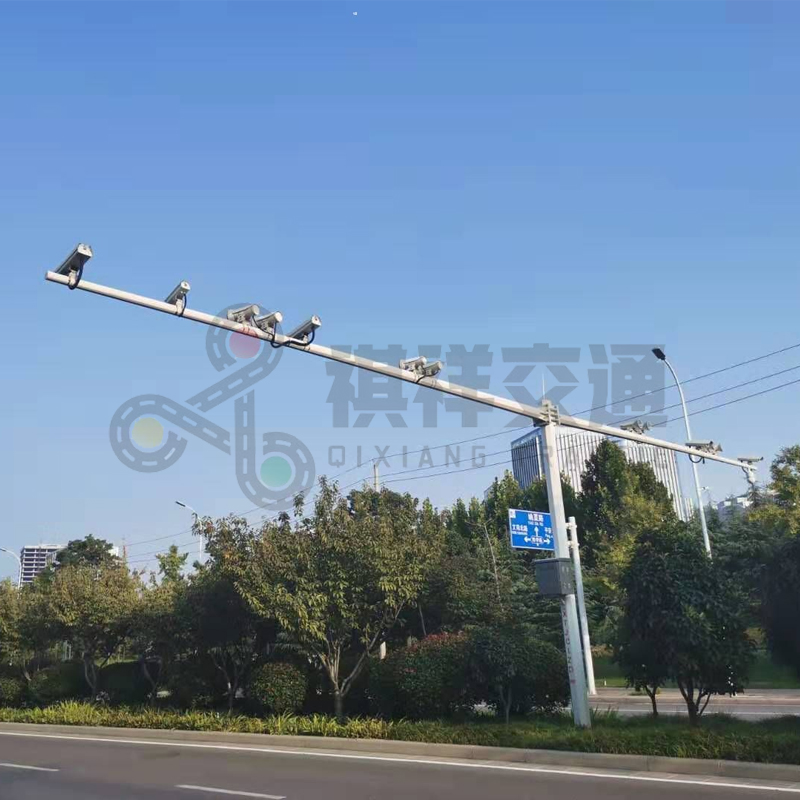Traffic light poles are a ubiquitous feature of the modern urban landscape and an important component of traffic management systems. These poles support traffic lights, regulate vehicle and pedestrian flow at intersections, and ensure road safety and efficiency. To maintain the integrity and functionality of these critical structures, traffic light pole standards were developed to guide their design, installation, and maintenance.
Traffic light pole standards are developed and enforced by regulatory agencies and engineering organizations to ensure these structures meet specific standards for safety, durability, and performance. These standards cover all aspects of traffic light pole design and installation, including materials, dimensions, structural integrity, and visibility. Compliance with these standards is critical to ensuring the reliability and effectiveness of traffic light poles in managing traffic flow and enhancing road safety.
One of the key aspects of traffic light pole standards is the materials used in their construction. Rods are typically made from durable materials such as steel, aluminum, or composite materials that offer high strength and resistance to environmental factors. These materials must meet industry standards for structural integrity and corrosion resistance to ensure the longevity of the light poles and minimize the need for frequent maintenance.
In addition to material requirements, traffic light pole standards also specify the dimensions and design features of light poles. The height, diameter, and wall thickness of light poles are carefully designed to ensure they can support the weight of traffic lights and withstand wind loads and other environmental forces. In addition, design standards may include provisions for features such as light fixture arms, mast arms, and signal heads to ensure proper positioning and visibility of traffic lights.
Additionally, the installation of traffic light poles is governed by specific standards to ensure they are securely fastened and aligned to meet visibility and functionality requirements. Proper installation practices, including the use of appropriate foundations and anchoring systems, are critical to prevent light pole failure and maintain traffic light stability in varying weather conditions.
Visibility is a key factor in the effectiveness of traffic light poles, and standards are in place to ensure traffic lights are clearly visible to motorists and pedestrians. These standards may include specifications for traffic light positioning, use of reflective materials, and avoidance of obstructions that may impede visibility. By complying with these standards, traffic light poles can effectively communicate signals to road users, reduce the risk of accidents, and improve traffic flow.
Additionally, maintenance and inspection of traffic light poles are critical to ensuring their continued functionality and safety. Standards of maintenance practice outline a schedule of periodic inspections, measures to prevent corrosion, and procedures to address structural damage or deterioration. Adherence to these standards helps identify and correct potential problems before they compromise the integrity of utility poles and the effectiveness of traffic management systems.
Compliance with traffic light pole standards is vital to ensuring the safety and efficiency of the road network. By adhering to these standards, transportation authorities and engineering professionals can mitigate the risks associated with traffic light pole failures and malfunctions, thereby increasing the overall reliability of traffic management systems.
In summary, traffic light pole standards play a vital role in ensuring the safety and efficiency of traffic management systems. These standards cover all aspects of traffic light pole design, installation, and maintenance, including materials, dimensions, visibility, and structural integrity. By adhering to these standards, transportation authorities and engineering professionals can maintain the reliability and effectiveness of traffic light poles in regulating traffic flow and enhancing road safety. As urban environments continue to evolve, compliance with traffic light pole standards remains critical to support the seamless and safe movement of vehicles and pedestrians through intersections.
Welcome to contact traffic light pole manufacturer Qixiang to get a quote, we provide you with the most suitable price, factory direct sales.
Post time: Apr-16-2024







